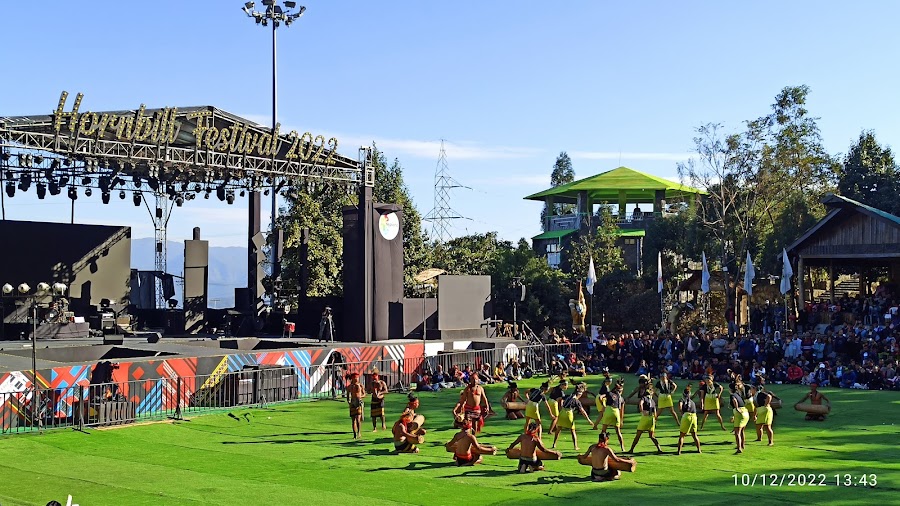
Kisama Heritage Village
Kohima, India
- Attend cultural performances and dances.
- Explore the tribal huts and morungs.
- Interact with local artisans and performers.
- Learn about Naga history and customs.
- Photography of the unique architecture.
- Sample traditional Naga cuisine.
- Shop for local handicrafts and souvenirs.
Known for:
Description:
Kisama Heritage Village, located near Kohima, is a cultural showcase of Nagaland's 16 major tribes. Established by the State Government of Nagaland, it serves as the permanent venue for the Hornbill Festival, a vibrant annual celebration of Naga culture, traditions, and heritage. Throughout the year, the village offers visitors a glimpse into the unique lifestyle, architecture, and customs of each tribe. Traditional huts (morungs) representing each tribe are meticulously maintained, displaying artifacts, tools, and cultural items. Kisama provides an immersive experience, allowing tourists to learn about Naga history, art, dance, music, and cuisine. It's a must-visit destination for anyone seeking to understand and appreciate the rich cultural tapestry of Nagaland.
History:
Kisama Heritage Village was established in 2003 by the Government of Nagaland to create a permanent venue for the Hornbill Festival. The festival, initiated in 2000, aimed to promote tourism and preserve Naga cultural heritage. Prior to Kisama, the festival was held at different locations. The establishment of Kisama provided a dedicated space to showcase the diverse traditions of all Naga tribes in one location. The village was designed to represent a microcosm of Nagaland, with each tribe constructing its traditional morung (youth dormitory) or hut, reflecting its unique architectural style and cultural practices. Over the years, Kisama has grown into a significant cultural landmark, attracting tourists and researchers interested in Naga culture.